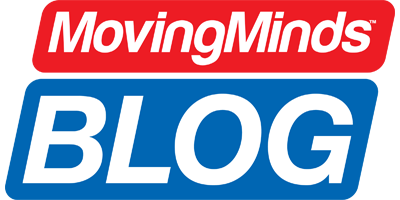The Springboard to Active Schools initiative is an online platform that assists teachers, administrators, parents, and other school physical activity leaders with strategies to maximize activity efforts related to Comprehensive School Physical Activity Programs.
The Springboard to Active Schools site provides a plethora of information, resources, and training related to classroom physical activity. Specifically, the document Strategies for Classroom Physical Activity in Schools is an excellent resource for administrators and staff alike. It provides convincing rationale for incorporating physical activity into the classroom. It also offers helpful strategies for making this a reality. In a nutshell, the authors recommend three overarching approaches for successful adoption of classroom physical activity as a regularly occurring practice:
- Generate buy-in and provide training/support
- Establish classroom environments supportive of physical activity
- Assemble and communicate information about classroom movement experiences
Step 1 – Generate Buy-In
As a classroom teacher, your involvement in Step 1 is really helping to generate buy-in among your colleagues. Individuals who have truly embedded movement into their teaching space have some motivation for doing so, whether it is improved student behaviors, positive socialization among students, a sense of higher learning taking place, and/or instilling a feeling of responsibility among the class.
Oftentimes, other teachers will catch on to something special going on for those classes and be willing to try it themselves. Administrators may see the positive affect and be supportive (we hope!), which can lead to their curiosity and ultimate promotion of that teaching style. You may ultimately become proficient enough at integrating physical activity into your classroom that you feel comfortable enough to present efficient methods to other teachers in your building, but the overall training and support would ultimately be up to your administration. No school is alike, so each one is starting from a different place along the spectrum of “readiness” to embrace the active schools concept.
Another great (and free) resource for generating buy-in is Moving Minds’ Toolkit. You can download the toolkit and learn about the positive impacts of physical activity on the brain and how incorporating physical activity in the classroom can enhance memory, learning, and student motivation! The toolkit also includes easy to use tips to implement and share with your colleagues and peers as you tackle the challenges of changing your classroom environment to include active learning.
Step 2 – Establish Environments that Support Physical Activity
Step 2 relates to teachers and staff looking at their schedules to identify opportunities and appropriate times to incorporate movement breaks as well as how to arrange the classroom to make this most effective. Additionally, resources to promote physically active learning spaces are needed. There are multiple digital platforms that offer free and low-cost videos and opportunities for students to be active. While not a necessity to get kids moving, active seating helps support the culture of decreasing the time students spend sedentary in the classroom space. So many options are available, including stability ball chairs, standing desks, yoga mats, and wobble stools. The notion of “active classrooms” is not new, but it is definitely gaining momentum as of late. Read more about overcoming barriers.
Step 3 – Communicate Information
Lastly, gather and communicate information about classroom movement. As a teacher who implements activity within the class, take pictures, have students write about their experiences, video the students, invite parents to see it in action, and toot your own horn for what you are doing for the health and academic life of your students! Post positive things on social media. Incorporate these things into projects the students complete. Share with your administrators. People love seeing success stories, especially in academia. Be the change!
Want to Keep Reading?
How Active Seating Helps Students with ADHD
Using Classroom Physical Activity to Help Students with Mental Health and Anxiety
How Classroom Activity Improves Behavior and Test Scores
References
Centers for Disease Control and Prevention. (2018). Strategies for classroom physical activity in schools. Atlanta, GA: Centers for Disease Control and Prevention, US Department of Health and Human Service.
Heather is a Professor in the Department of Kinesiology and Health Promotion at the University of Kentucky. She is a former physical education teacher, and co-author of Dynamic Physical Education for Secondary School Children, 8ed. Heather was also the recipient of the NASPE Curriculum and Instruction Young Scholar Award and a AAHPERD Research Consortium Fellow.






Leave A Comment